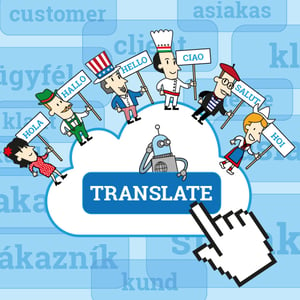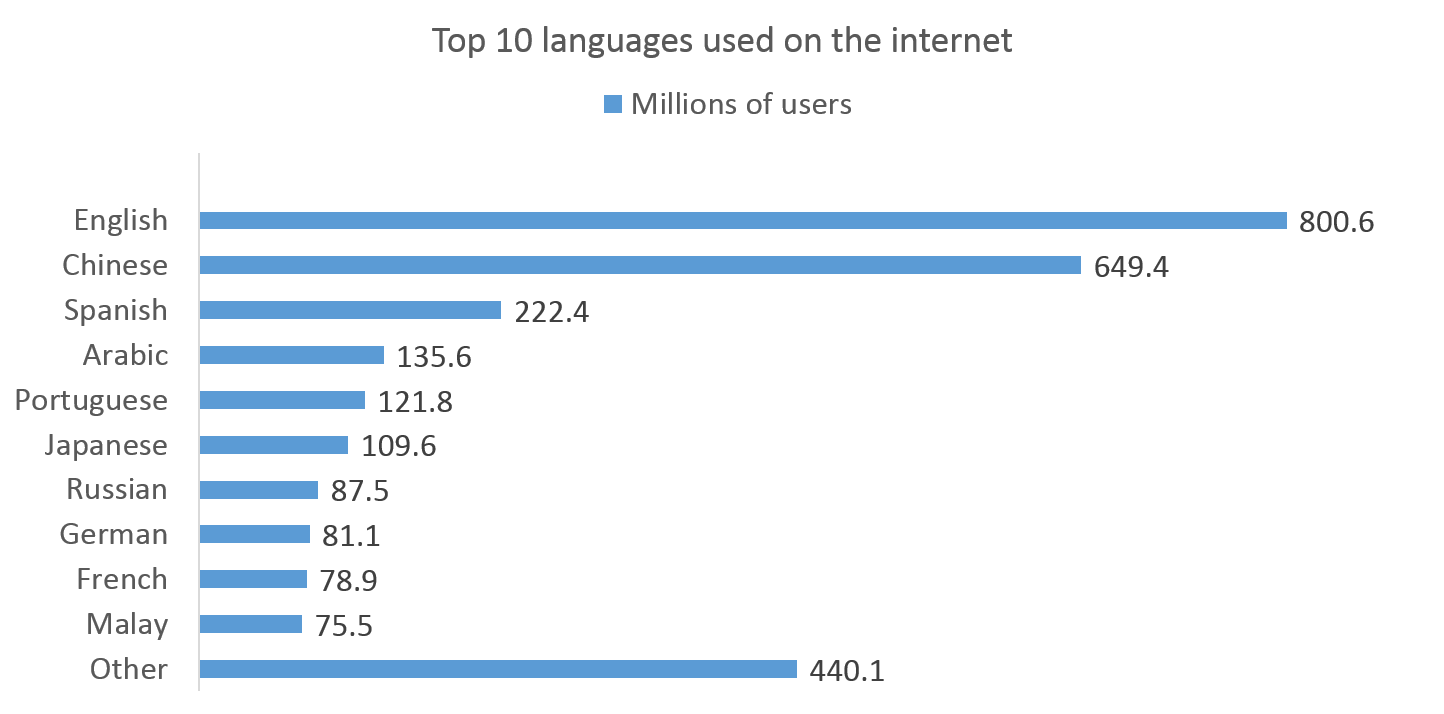 How many languages can you speak sufficiently well to communicate with your fellow humans? Today's hyper-connected world enjoys approximately 6,500 languages, shared amongst >7 Bn people spread across >169 countries. So how do you feel now? Belittled? I do. Language, and communication between differing languages, is an issue that humankind has faced for a wee while now. Now, where did all these languages come from?
How many languages can you speak sufficiently well to communicate with your fellow humans? Today's hyper-connected world enjoys approximately 6,500 languages, shared amongst >7 Bn people spread across >169 countries. So how do you feel now? Belittled? I do. Language, and communication between differing languages, is an issue that humankind has faced for a wee while now. Now, where did all these languages come from?
According to some, blame it on the Tower of Babel! In the Book of Genesis (the 1st book, of the Hebrew Bible) we are told that it all started after the flood. Before that, there was just one language, I am not sure what that was, but let’s assume something akin to Hebrew? So there we were getting along just fine, chatting away with everyone (perhaps we were not very many then, which would have made it easier) in a monoglot world, while busily building a wonderful city and then someone had the bright idea to build a very high tower (Babel) whose top touched the heavens. This was in fact a bad idea, as it seems not to have pleased the Lord, who in short and in his wisdom, decided to “confuse their (read our) language, that they (again read you and I) may not understand one another’s speech” and scattered us across “the face of all the earth”. I feel there was an overreaction there, given the offence itself and the intentions behind it, and certainly the consequences have been near catastrophic.
There is, of course, an alternative view to the origin of language. Charles Darwin, happened along, expounding his Theory of Evolution, and the debate continues today as wise linguists, archaeologists, psychologists, anthropologists propose their many theories, including “continuity”, “discontinuity”, “innate” and “cultural”. You take your choice. What is certain is that we have been living with and enjoying the consequences, while Language Service Providers (LSP’s) have been making an honest living, for a very long time...
A couple of thousand years on from “Babel” or “evolution” and where are we now? Of the 6,500 current languages, we can take small comfort from the fact that >90% of these languages are used by less than 100,000 people, knowing that there are >150 principal languages with >1Mn users. So here is a handy list of the top 20. See below, it’s your check list.
| Top 20 of the most widely spoken languages by "First language" speakers | |||||
| Rank | Language | Primary Country |
Number of total countries where the language is spoken |
Speakers (millions) | |
| 1 | Chinese | China | 31 | 1,213 | |
| 2 | Spanish | Spain | 44 | 329 | |
| 3 | English | United Kingdom | 112 | 328 | |
| 4 | Arabic | Saudi Arabia | 57 | 221 | |
| 5 | Hindi | India | 20 | 182 | |
| 6 | Bengali | Bangladesh | 10 | 181 | |
| 7 | Portuguese | Portugal | 37 | 178 | |
| 8 | Russian | Russian Federation | 33 | 144 | |
| 9 | Japanese | Japan | 25 | 122 | |
| 10 | German, Standard | Germany | 43 | 90.3 | |
| 11 | Javanese | Indonesia | 5 | 84.6 | |
| 12 | Lahnda | Pakistan | 8 | 78.3 | |
| 13 | Telugu | India | 10 | 69.8 | |
| 14 | Vietnamese | Viet Nam | 23 | 68.6 | |
| 15 | Marathi | India | 5 | 68.1 | |
| 16 | French | France | 60 | 67.8 | |
| 17 | Korean | Korea | 33 | 66.3 | |
| 18 | Tamil | India | 17 | 65.7 | |
| 19 | Italian | Italy | 34 | 61.7 | |
| 20 | Urdu | Pakistan | 23 | 60.6 | |
Now get this, to manage the communication issues created by all these languages, the outsourced language (translation, localization, and interpreting) services industry is worth >$40 Bn (€37 Bn, £37 Bn) (2015) and enjoys, seemingly recession proof, compound annual growth rate of >12%. In the United States, the U.S. Bureau of Labor Statistics (BLS) report projected 42% growth in the industry from 2010 to 2020, outpacing average growth for other occupations studied by the BLS. They note that, “growth reflects an increasingly diverse U.S. population of 320 million". Now check out Europe, with our diverse populations. The European Union (EU), comprises 28 countries, >500 Mn citizens with 24 officially recognized languages. Doing the math, 24 languages gives a total of 529 possible combinations (English-Spanish, French-German, Estonian-Greek, etc). I know a few people who speak 6 of these languages, which is considered impressive. So how do the rest of us cope? We turn to Language Service Providers (LSPs). The European Commission alone has >2,000 translators, who process >2.5 million pages at a cost of >€800 Mn p.a. The world of LSPs is by definition global and fragmented with many millions of multi-lingual individuals across the globe free-lancing practicing their art. Out of this has developed >26,000 LSP companies, including the top 50 that account for only $4 Bn, 10% of the market. Today, this is all in a phase of consolidation, as a growing international corporate client base, with very defined requirements and smart technologies (see our eBook) have all conspired to change the LSP landscape. There are now 12 market leaders with revenues of >$100 Mn. LSPs provide the communication back-bone for the >150 principal languages, and its 1,000’s of combinations, and is hugely lucrative. Seems investing in the LSP sector (recently favored in fund raising), and you are bound to do well.
From a corporate perspective, large, international and globally integrated companies, have a presence in anywhere upward of 80 countries, requiring more than 50 languages. The well-established multi-nationals, ranging from the Apple, through Coca Cola, GE, L’Oréal, McDonalds to the Unilevers of this world have already walked this road, and successfully. LSPs are key in the internationalization communication processes. Today, when you want to avail yourself of translation, localization, and interpreting services you have thousands of organizations to talk to all proposing three principal choices: professional translators, machine translation (MT) and most recently crowdsourcing. Professional translators will always have a role to play, facilitating the internationalization of business, government, academics, science and the list goes on, from a linguistic standpoint. At the very least, professional translators manage the projects and programs, developing and applying machine and crowdsource translation. MT, especially rules, statistical machine translation (SMT), translation memory (TM) and hybrid based technologies, are the cutting edge, productivity tools that are revolutionizing the industry. The Translation Software market is estimated at approximately $575 Mn in revenue for 2010, and is anticipated to reach $3 Bn by 2017. Crowdsourced translation typically comes in at about 20% the cost of professional translation. After years of worrying that the role of professional translators was being replaced by MT, along came crowdsourced translation. Today we have combinations of language translation options and accompanying low price points enabling small and medium sized businesses and organizations to communication internationally in full multi-lingual mode. Now, as a business development officer challenged with growing your exports and business internationally, imagine your company's communications being read worldwide, or at least in say across North America and Europe, and successfully growing your exports and business there. You may not be in the big league, yet, but thanks to an increasingly global economy, the power of the internet and the availability of translation, localization interpreting services, those dreams are becoming a reality for many companies.


